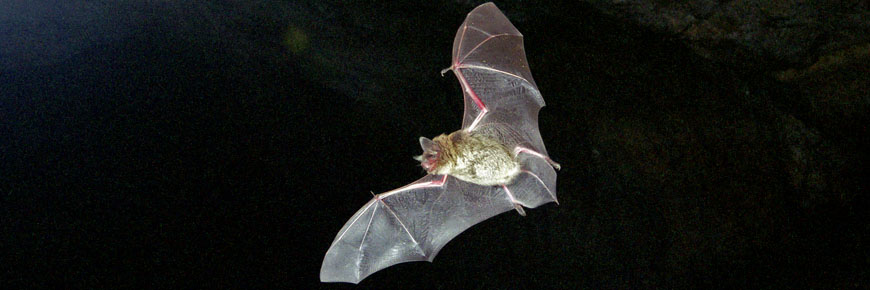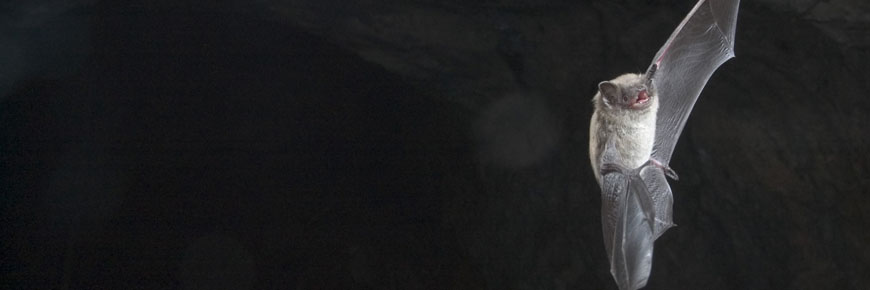
Photo: Sherri and Brock Fenton
What is it like to be a bat?
Parks Canada considers an old question.
In 1974, the American philosopher Thomas Nagel published a famous essay called "What is it like to be a bat?" He pointed out that we can go only so far in imagining ourselves into the head of a bat—they live in such a different sensory world from ours.
But maybe “only so far” is just far enough, to understand why bats are such amazing creatures.
Let’s start small—with the Little Brown Myotis or Little Brown Bat. It’s the most widespread of Canada’s 17 regularly seen bat species. It is also a species at risk.
To become this bat (in your mind), you first have to shrink yourself down to 4 or 5 centimetres in size.
At the same time, make your fingers and arms very skinny, into long, delicate bones. These provide the upper framework for your wings. Like the ribs of an umbrella, they support a stretchy membrane—one that will carry you through the air.

You are now covered in fur and weigh about as much as a Canadian loonie coin.You are ready for the next stage.
Open and close your wings… and take a leap in the dark. You are now moving through a warm, windless summer’s night, swooping and darting just above the trees. It is a few hours past sunset. You can feel the night air buoying you up because the tiny hairs on your wings are very sensitive to airflow.
You seem to fly crookedly—like a crack moving through a teacup, as the German poet Rainer Maria Rilke once said—but actually you are a much more efficient flyer than a bird. That’s because your wings contain more than two dozen joints that make the membrane very flexible. Your wings can take on different shapes to catch air and provide lift.
Did you know?
Bats in Canada are under threat from a disease called white-nose syndrome. Find out what you can do.
All around you are objects—big fixed objects like the trees, and tiny moving objects like mosquitoes and moths. You can actually hear the shapes of these objects. You send out pulses of sound, beyond the range of most human hearing, from your mouth: these pulses send back echoes to you, creating a soundscape in your head.
Then… a mosquito at 11 o’clock!
You now send out even faster pulses of sound: these act as a focusing lens, allowing you to zero in on the tiny shape that is your prey. You open your mouth and snap up the mosquito. (For bigger insects, you sometimes use your tail membrane to scoop them into your mouth).
It’s no wonder that bats are role models for superheroes. They’re gifted flyers; they use a special sense to navigate the world; and they’re fighting the good fight against pests… in this case, insect pests. Their worldwide value as a natural form of pest control for agriculture and forestry is estimated in the billions of dollars.
- Date modified :